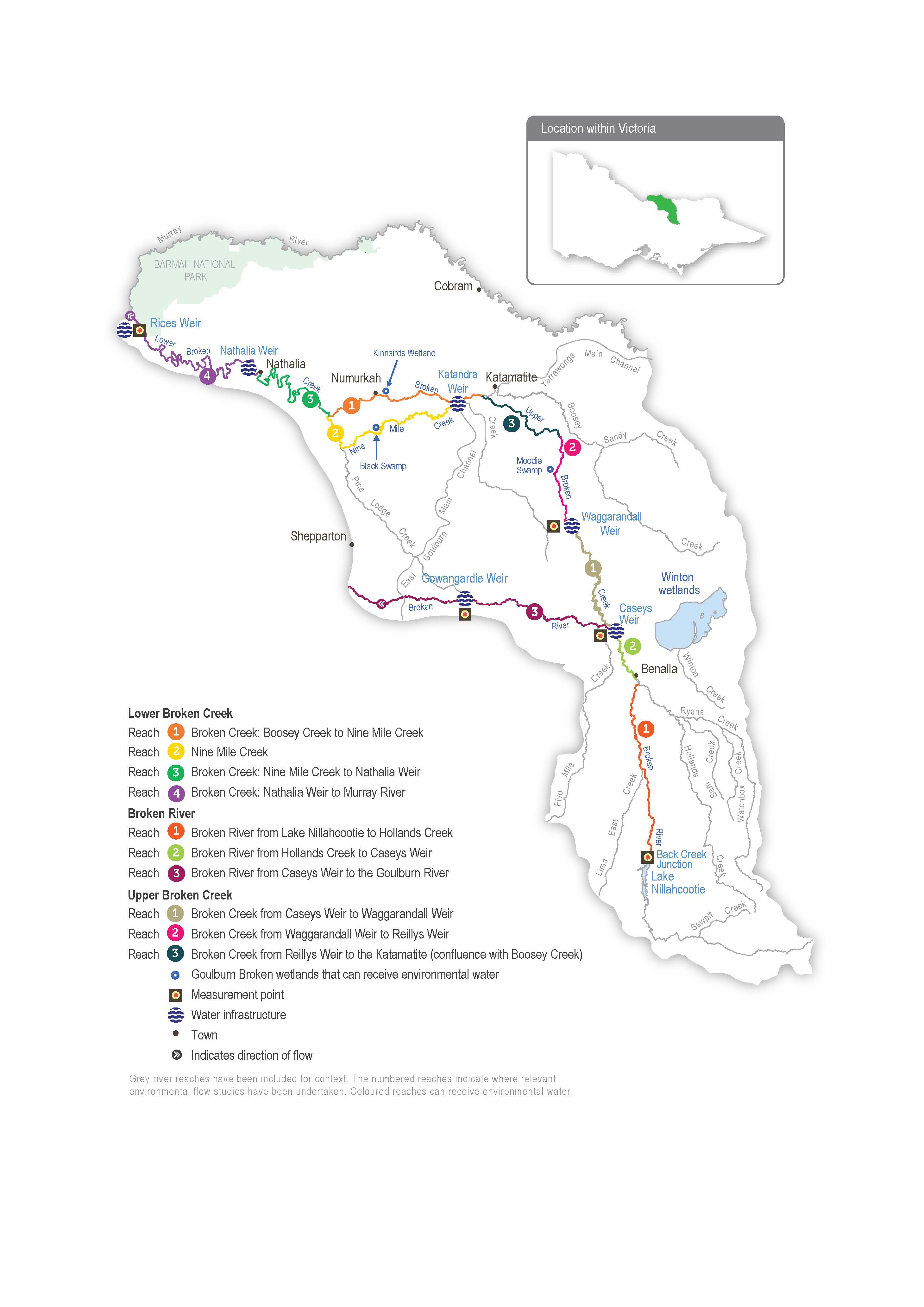On this page:
Latest information about where, when and why environmental water may be delivered to the Broken wetlands and the environmental objectives being targeted is available in this year’s seasonal watering plan.
The seasonal watering plan also contains information about how environmental flows could support cultural, social, recreational and economic values in the Broken wetlands.
Watering data for the Broken wetlands and the wider northern region is updated quarterly. Visit current watering releases to find out more.
To find out the current environmental water entitlements held by the VEWH in the Broken wetlands visit our water holdings.
Information about the ownership of water entitlements in the Broken wetlands can be found under the Entitlements and Compliance section of the Broken basin page at Victorian Water Accounts.
Waterway manager
Goulburn Broken Catchment Management Authority
Storage manager
Environmental Water Holders
Victorian Environmental Water Holder
Commonwealth Environmental Water Holder
Traditional Owners
Yorta Yorta Nation Aboriginal Corporation (YYNAC) has a Recognition and Settlement Agreement with the Victorian Government and is the statutory authority for the management of Aboriginal heritage values and culture, under the Victorian Aboriginal Heritage Act 2006.
System overview
Of some 3,600 natural wetlands in the Goulburn Broken region, only three in the Broken catchment have infrastructure that allows them to receive environmental water: Black Swamp, Kinnairds Wetland and Moodie Swamp.
All three wetlands are on the Country of the Yorta Yorta People. Their knowledge and practice are evident throughout the landscape; for example, Black and Moodie Swamps have evidence of old cooking mounds around their perimeter. Kinnairds Wetland and Black Swamp are red gum swamps near Numurkah. Moodie Swamp is a cane grass wetland adjacent to upper Broken Creek at Waggarandall that provides excellent breeding habitat for brolga.
The water regimes of these wetlands are influenced by their position in the landscape. The development and operation of the Shepparton and Murray Valley irrigation districts have changed the natural flow paths and the timing, frequency, volume and duration of natural flooding to these and other wetlands in the region. The existing irrigation system infrastructure enables water for the environment to be delivered to the three wetlands, but under existing agreements, irrigation deliveries have priority within the channel system. This limits the volume of water that can be delivered to the wetlands. The VEWH, waterway managers and storage managers adjust the timing and rate of environmental deliveries where possible to optimise environmental outcomes within the current system constraints.
Environmental values
Moodie Swamp, Kinnairds Wetland and Black Swamp support diverse vegetation communities ranging from river red gum to cane grass. The wetlands contain state and nationally threatened vegetation communities and species, including ridgid water-milfoil and river swamp wallaby grass. The wetlands also provide food resources and breeding habitat for bird species of high conservation significance, including eastern great egret, Latham’s snipe, white-bellied sea eagle, Australasian bittern, brolga, royal spoonbill, yellow-billed spoonbill, Australasian shoveler and glossy ibis. Many of these species are listed in international agreements and conventions. Moodie Swamp also supports Sloane’s froglet, listed in the Commonwealth Environment Protection and Biodiversity Conservation Act 1999.
Page last updated: 17/03/25
